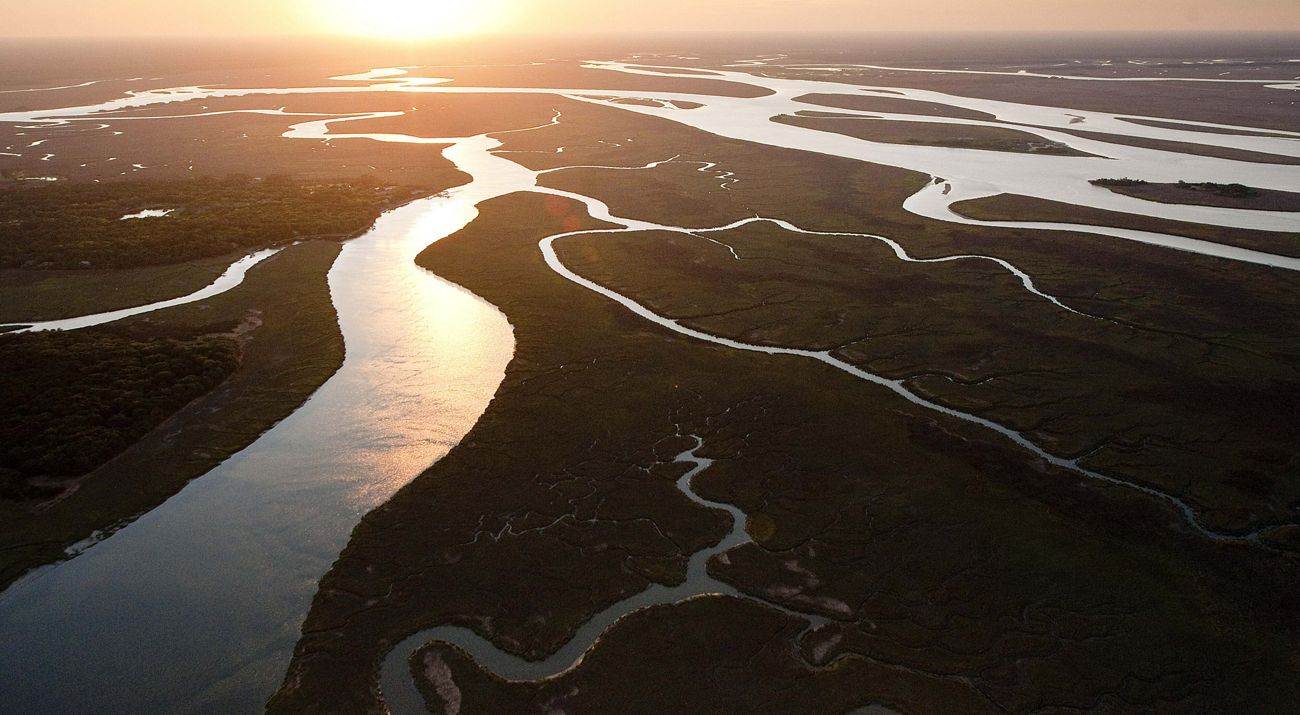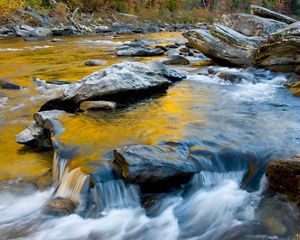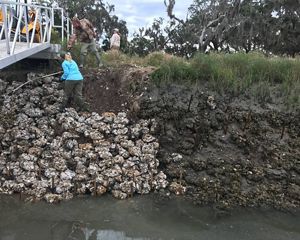The Way to Think About Rivers
President Carter, champion for all rivers, recounts a trip on the Altamaha, and reflects on the importance of protecting America's rivers.
by Jimmy Carter
For a birder, adding a new species to your life list is a thrill. My wife, Rosalynn, and I have been avid birders for many years, and although the Altamaha River means many things to many people, I’ll always remember it as the place where I added the lesser yellowlegs to my list. Thousands of migratory birds like the lesser yellowlegs rely on the Altamaha River for shelter and sustenance. Formed at the confluence of the Ocmulgee and Oconee rivers, the Altamaha runs free through sparsely populated southeast Georgia for 137 miles, earning it the distinction of being one of the largest undammed river systems on the East Coast. The river quietly winds through deep forests and swamps and nourishes vast salt marshes as it mixes with the Atlantic Ocean, feeding the Georgia coast where some areas remain near-pristine.
Over the years, many have tried to transform the character of the Altamaha, proposing everything from damming to dredging and intense development. But local people opposed the plans. And beginning in the late 1960s, The Nature Conservancy focused its attention on the swamps and sandy ridges that flank the Altamaha, working side-by-side with the river’s local keepers to secure land and protection agreements. Now, more than 40 years after “adopting” the river, TNC has helped safeguard almost 100,000 acres in the watershed.
I was persuaded of the Altamaha’s importance not just because of its might and beauty, but because of the way I think about all rivers. Racing rivers and meandering streams, rushing creeks and undulating marshes have always captivated me.
My journey as an environmentalist began in the rivers and creeks around my home. Since our ancestors moved into southwest Georgia, our family farm has been nourished by Choctahatchee and Kinchafoonee creeks, and for more than 80 years I have relished and enjoyed these watersheds.
A lifetime of fishing, swimming and birding has helped me learn firsthand that all aspects of our lives are tied to the health of our free-flowing streams. As a political leader, I wanted to enact policies that would get others to think differently about our waterways.
I lived up to my personal commitment while I served as governor of Georgia. I worked with legislators and local citizens to protect the iconic Chattahoochee River, used my authority to reverse a congressional decision to build dams on the Flint River and vetoed several hundred pending permits to drain wetlands throughout the state. I created the Georgia Heritage Trust, and the state legislature set aside funds to acquire large and small portions of land that make Georgia unique and special.
We also began the process of protecting or acquiring the Georgia coastal islands and established the Marshland Protection Agency to safeguard about 600,000 acres of marshlands in their pristine natural state. All of these actions, strongly supported by my fellow citizens, served to strengthen protection of the Altamaha River and its floodplains.
Quote: Jimmy Carter
I was persuaded of the Altamaha’s importance not just because of its might and beauty, but because of the way I think about all rivers. Racing rivers and meandering streams ... have always captivated me.
When I became president of the United States in 1977, I took my affinity for rivers with me. I launched a running battle, largely successful, with the U.S. Army Corps of Engineers and members of Congress to limit construction of other dams that were not both economically and environmentally justified.
I have visited the undammed Altamaha on several occasions, but the most memorable trip was in 2000.
Guided by a group of biologists, including staff from The Nature Conservancy and the Georgia Department of Natural Resources, we observed several species of diving waterfowl and heard tales of the mysterious ivory-billed woodpecker, which would have once flown in the surrounding forests.
We stopped to talk near Lewis Island, 5,633 acres of swamp and ancient forest near the mouth of the river, which had been protected by the Georgia Heritage Trust while I was governor.
Seeing that wild island hanging on in the middle of this powerful river reinforced for me the importance of conservation and organizations like The Nature Conservancy. It was also a strong reminder of the fragility of our natural areas and the need for constant vigilance by private citizens, working with national, state and local organizations to preserve them.
I am confident that, together, we can continue to make decisions to protect our planet for future generations, but I also know how much time and hard work it takes. We need champions, such as the scientists, staff and supporters of The Nature Conservancy, to remain alert to new threats that would damage or diminish land and waters like the Altamaha River.
I know that together we can carry forth the legacy of those who have come before us, ensuring a healthy and abundant future for all life that depends on the rivers, creeks, smaller streams and their watersheds. Georgia can continue to set an example for other regions to emulate.
Note: This story originally ran in the Fall 2012 issue of Nature Magazine.
Take Action. Across Georgia. For Nature.
Be part of the solution and stand up for our natural world. Help protect Georgia’s lands and waters by making a gift for conservation today.





